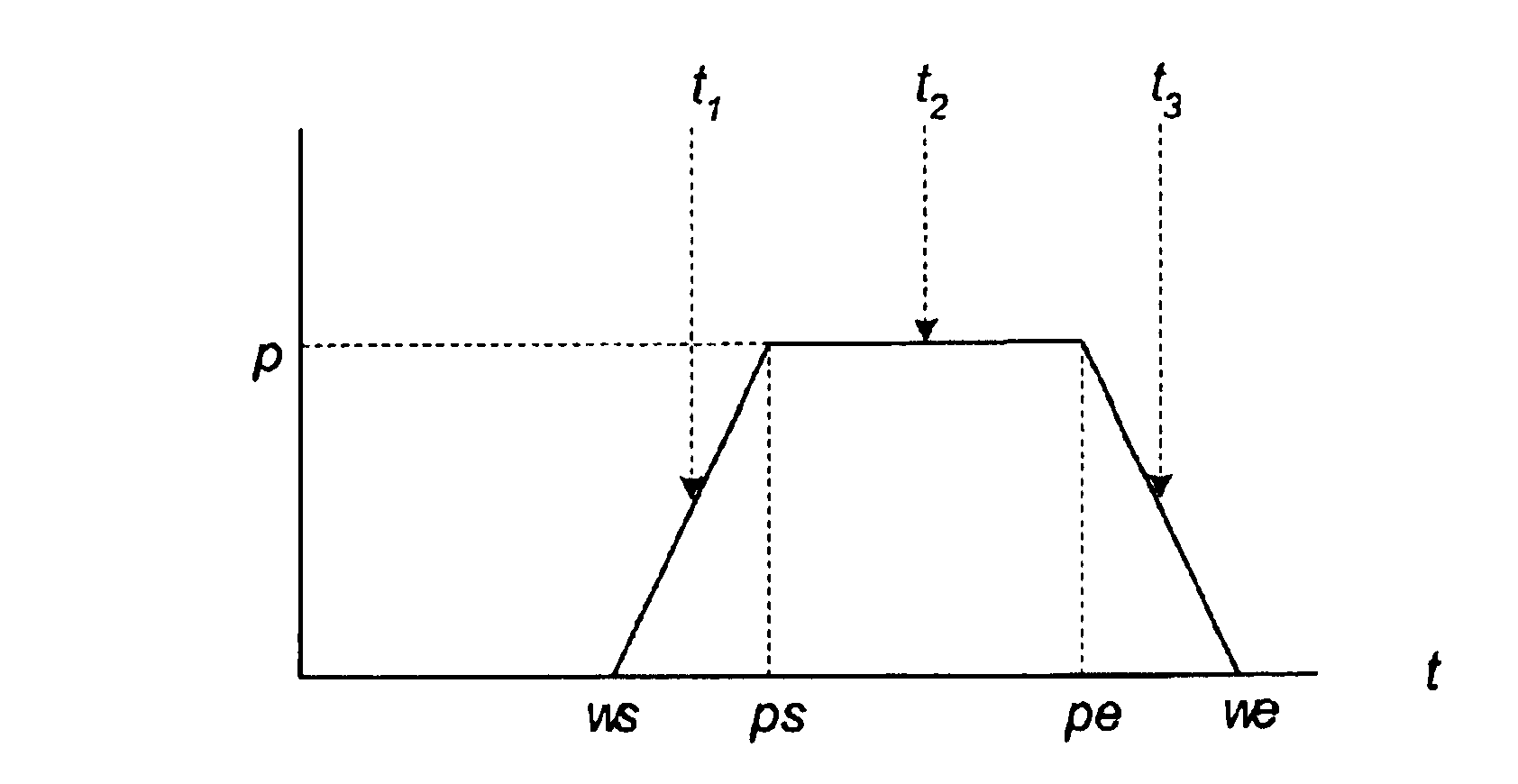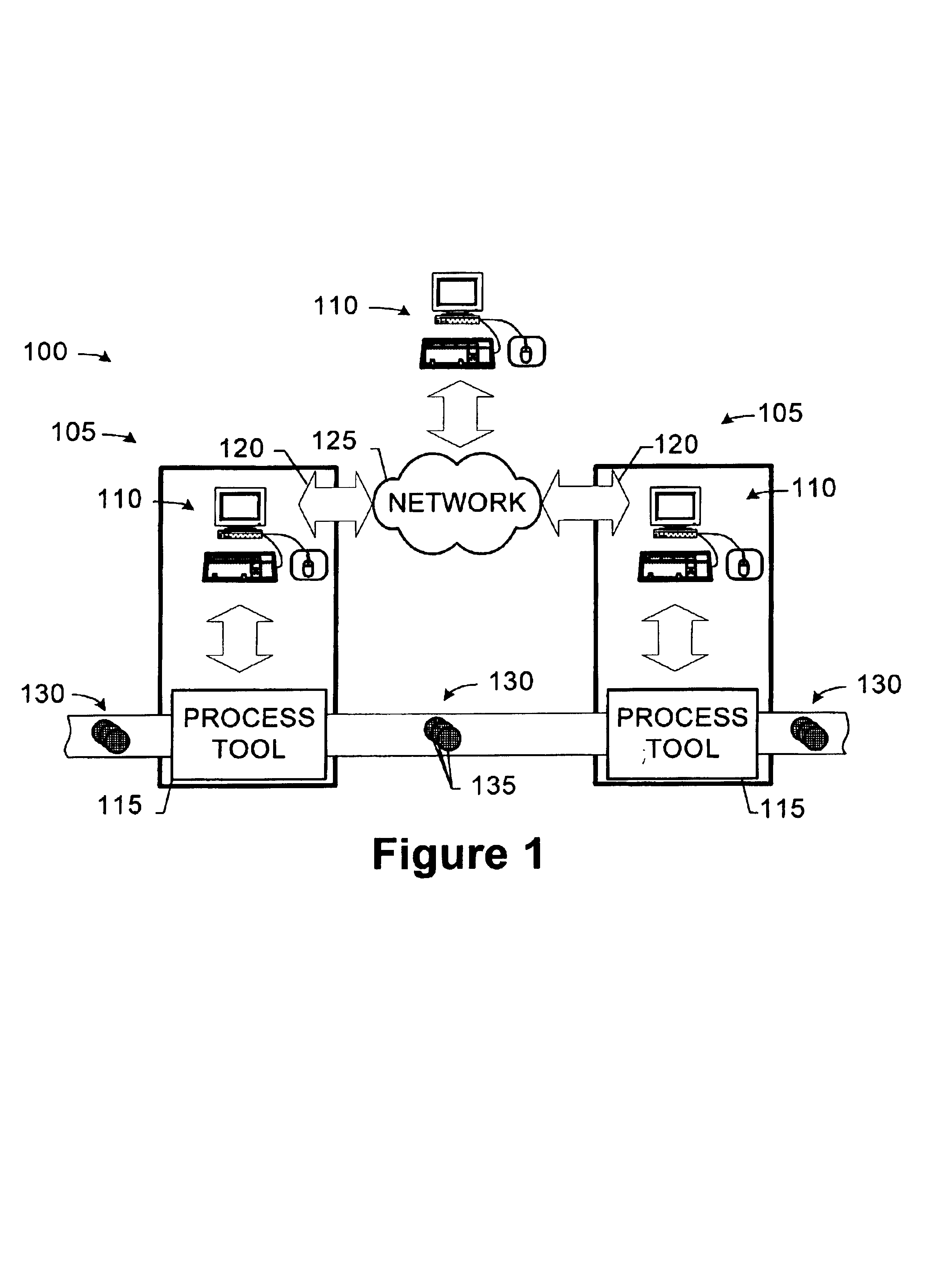Method and apparatus for reducing scheduling conflicts for a resource
a scheduling conflict and resource technology, applied in the field of automatic manufacturing environments, can solve the problems of process tool idleness, lack of advance scheduling, and inability to support highly automated factory operations
- Summary
- Abstract
- Description
- Claims
- Application Information
AI Technical Summary
Benefits of technology
Problems solved by technology
Method used
Image
Examples
case 4
ww overlaps entirely within ROV):
RightArea4(t)=k
LeftArea4(t)=0
[0378]The situation shown in FIG. 13 falls in Case 2, and RightArea2(t=5.76, 1, 10, 2)=0.93.
[0379]There are two mechanisms for reducing the area that an engagement contributes to cc(t): shifting the whole engagement (presumably because the working window is smaller than the commitment window) and shrinking the working window. In the example scenario of FIG. 13, where the engagement is on the left end of the ROV, the engagement may be shifted left or shrunk by moving its right end to the left. The machine scheduling agent 410 calculates how much to shift or shrink the working window to realize a required amount of ROV reduction.
[0380]The excess area in the ROV is shown in FIG. 13 (the area under cc(t) but above cc(t)=1) is 6.24. By shifting the engagement represented by the trapezoid 1320 entirely out of the ROV area, 0.93 could be recovered as indicated above. However, in general, it may be desirable to take only a portio...
case 4 ′
Case 4′: we
[0399]Similar to the case 4, an engagement that entirely overlaps an ROV has three components that may contribute to the ROV: LeftRampArea, PlateauArea and RightRampArea. Depending on the AreaNeeded, part or all of these components may be required. The total shift Δt in this case has two parts: Δt,=t−we (which does not reduce any ROV), and Δt2=we′−t (which is the special case of Case 3′ when t=we), where we′ is the new window end after the shift. Thus, there are four subcases.
[0400]Subcase 4′.1: If AreaNeeded2 can be derived directly from the subcase 3′.1 with t=we, and that yields: Δ t2=-(s*p+pe-t)+(s*p+pe-t)2+8*s*AreaNeeded2.
Thus, the total shift is given by: Δ t=Δ t1+Δ t2=t-we+-(s*p+pe-t)+(s*p+pe-t)2+8*s*AreaNeeded2.
[0401]Subcase 4′2: If RightRampArea2 can be derived directly from the subcase 3′.2 with t=we, and that yields: Δ t2=(t-pe)*p*s2*s*p+AreaNeededp.
Thus, the total shift is given by: Δ ...
case 1
s (shrink left)
[0416]This case is illustrated in FIG. 18. There are two subcases, depending on whether tps′. Because t
RightArea(t, ws, we, k)=k−(t−ws)2 / (2s).
The formula for RightArea(t, ws, we′, k) depends on whether tps′. For the subcase t
RightArea(t, ws, we′, k)=k−(t−ws)2 / (2s′)
However, to reach the subcase t>ps′, ps′ must have moved to the left, so p′=1, pe′=ws+k, and t is in the plateau, yielding:
RightArea(t, ws, we′, k)=pe′−t+s′ / 2=ws+k−t+s′ / 2.
This equation can be evaluated to determine the maximum area available in a given region. For example, the equation used above:
AreaNeeded=RightArea(t, ws, we, k)−RightArea(t, ws, we−Δt, k),
can be evaluated when ps′=t. If the AreaNeeded is less than that value, the case t0). If AreaNeeded is less than this value, the case t>ps′ is present. Otherwise, even if the window is shrunk to its kernel size, the required area cannot be recovered, and other sources ...
PUM
 Login to View More
Login to View More Abstract
Description
Claims
Application Information
 Login to View More
Login to View More - R&D
- Intellectual Property
- Life Sciences
- Materials
- Tech Scout
- Unparalleled Data Quality
- Higher Quality Content
- 60% Fewer Hallucinations
Browse by: Latest US Patents, China's latest patents, Technical Efficacy Thesaurus, Application Domain, Technology Topic, Popular Technical Reports.
© 2025 PatSnap. All rights reserved.Legal|Privacy policy|Modern Slavery Act Transparency Statement|Sitemap|About US| Contact US: help@patsnap.com



